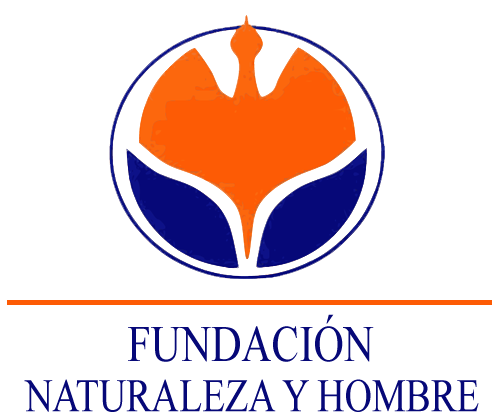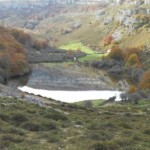- LIFE Miera
- LIFE en acción
- Recursos
- Proyectos LIFE+
- Trabajo en red
- English version
- Contacto
It is located in the eastern end of the Cantabrian Mountains, covering the headwaters of the rivers Pas, Miera and Asón. It comprises the Castro Valnera massifs to the southwest, Alto Asón in the central sector and the Sierra de Hornijo over the north-eastern extreme. Inside, there is the Natural Park of the Collados del Asón. The massifs that make up this SCI reachs modest altitudes, being the maximum elevation slightly higher than 1,700 meters (Castro Valnera, 1,718 meters), but with important slopes, typical of higher mountains, given the proximity of the sea and that the Valleys are located in even lower levels than 100 meters (the minimum level of the SCI is 75 meters above sea level). Its material is terrigenous to the southwest, becoming progressively calcareous towards the northeast.
As a consequence of the extension of the calcareous massifs and a very rainy climatology, a great karst develops that favors the existence of multiple caves in which eight species of chiroptera from Annex II of the Habitats Directive are present. Peat bogs are abundant, with important problems associated with overgrazing.
Among the animal species of greatest interest present are the wolf that despite its disappearance on the 1970s, a recolonization is taking place that, if consolidated, would cause its expansion towards the pre-Pyrenean mountain ranges. There are also other species such as roe deer, wild boar, Eurasian woodcock, grey partridge and hare.
In limestone cliffs, up to five species of raptors are included in the Wild Bird Conservation Directive: golden eagle, Egiptian vulture, griffon vulture and Eurasian eagle-owl.
The place is characterized by an alternation of moist heaths and forests; Beech trees are conserved in medium and high heights (between 500 and 1,300 meters of altitude), that sometimes develop on spectacular limestones reliefs. At lower levels, and always on calcareous areas, there are important masses of oak, whose main support is the lithological aridity, thanks to which they survive in a climate so humid.
OFICINAS CENTRALES FNYH
Dirección: Av. De España Nº 25 Entlo, 39610 El Astillero Cantabria
Tlf: 942 55 91 19 / 679181483
fundacion@fnyh.org
DELEGACIÓN PARA PORTUGAL
Dirección: Rua do Conde de Redondo 8-5º dt 1150-115 Lisboa Tlf: (++351) 919 784 981 crc@erena.pt
CASA DE LA NATURALEZA-MARISMAS DE ALDAY
Dirección: C/ Alday (junto al parking de Valle Real), Maliaño, Cantabria
Tlf: 679 181 472
educacionambiental@fnyh.org
DELEGACIÓN PARA SUDAMÉRICA
Iguazú iguazuconservation@fnyh.org
ECOMUSEO-FLUVIARIUM DE LIÉRGANES
Dirección: C/ Camino Real, 9, 39722 Liérganes, Cantabria
Tlf: 942 52 81 96
fluviarium@fnyh.org
DELEGACIÓN PARA ÁFRICA
Tanzania fundacion@fnyh.org
VIVERO Y CENTRO ETNOBOTÁNICO EL PENDO
Dirección: 39609 Camargo, Cantabria
Tlf: 942 25 88 08
vivero@fnyh.org

ESTACIÓN BIOLÓGICA CAMPANARIOS DE AZABA
Dirección: Camino de La Alamedila, SN 37497 Espeja, Salamanca
Tlf: 923481401
campanarios@fnyh.org


